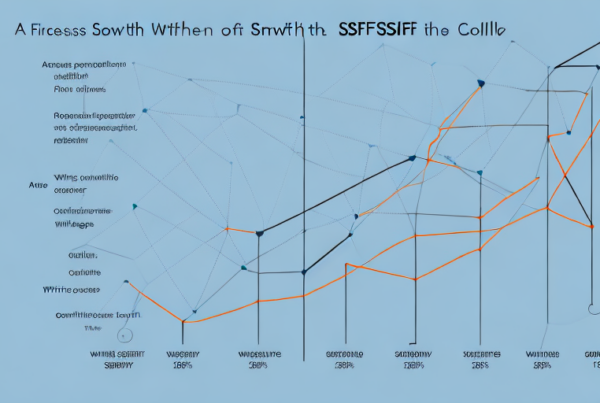Retirement is a significant milestone that requires proper planning to ensure a financially secure future. One popular retirement planning option that has gained traction over the years is a Self-Managed Superannuation Fund (SMSF). SMSFs provide individuals with greater control over their retirement savings, allowing them to make informed investment decisions and manage their funds more effectively. In this article, we explore the key aspects of SMSF management and how it can enhance retirement security.
Understanding the Importance of SMSF Management
SMSF, or self-managed superannuation fund, is a retirement savings vehicle that allows individuals to take control of their retirement savings and invest in a range of assets such as property, shares, and managed funds. The primary benefit of an SMSF is the control it gives to members in managing and growing their wealth. However, with great control comes great responsibility. Proper management is essential to ensure the SMSF is compliant with regulatory requirements and maximizes its returns.
What is SMSF and How Does It Work?
SMSF is a type of superannuation fund where members act as trustees and make investment decisions on behalf of the fund. The members are responsible for complying with regulatory requirements, such as preparing and lodging annual tax returns and financial statements and undergoing an annual audit. SMSFs offer flexibility in investment options, tax planning, and estate planning.
It is important to note that SMSFs are not suitable for everyone. They require a significant amount of time, effort, and expertise to manage effectively. Members must also have a good understanding of the regulatory requirements and investment strategies to ensure the SMSF is compliant and provides maximum returns.
The Role of SMSF in Retirement Planning
Retirement planning is a crucial aspect of financial planning, and SMSFs provide individuals with greater control over their retirement savings. SMSFs offer flexibility in investment options, tax planning, and estate planning. Properly managed SMSFs can help members achieve their retirement goals while minimizing tax liabilities and maximizing returns.
One of the key advantages of SMSFs is the ability to invest in a range of assets, including property. Property can provide a stable source of income through rental yields and long-term capital growth. However, investing in property through an SMSF requires careful consideration and expertise to ensure compliance with regulatory requirements.
Benefits of Proper SMSF Management
Proper management of SMSF can provide several benefits to members. Firstly, it ensures compliance with regulatory requirements and minimizes the risk of penalties or legal action. Secondly, it simplifies tax reporting by ensuring correct reporting of income, deduction, and tax liabilities. Effective SMSF management also helps members diversify their investment portfolio, minimize investment risks, and maximize their returns.
Effective SMSF management requires a range of skills and expertise, including investment strategy, accounting, tax planning, and legal compliance. Members can seek professional advice and guidance to ensure their SMSF is managed effectively and provides maximum returns.
In conclusion, SMSFs provide individuals with greater control over their retirement savings and investment options. However, with great control comes great responsibility. Proper management is essential to ensure compliance with regulatory requirements and maximize returns. Members must have a good understanding of the regulatory requirements and investment strategies or seek professional advice to ensure their SMSF is managed effectively.
Key Components of Effective SMSF Management
Effective SMSF (Self-Managed Super Fund) management involves several key components that ensure compliance, minimize risk, and maximize returns. These components are crucial in achieving the fund’s objectives and ensuring the members’ retirement goals are met.
Investment Strategy and Asset Allocation
One of the essential components of SMSF management is developing a robust investment strategy. The investment strategy should align with the members’ retirement goals and risk profile. An effective investment strategy should consider asset allocation, diversification, and risk management. Adequate asset allocation is crucial in achieving diversification and minimizing investment risk. The investment strategy should be reviewed regularly to ensure it remains relevant and aligned with the members’ goals.
Asset allocation is the process of dividing the fund’s assets among different asset classes, such as cash, fixed income, and equities. Diversification involves investing in different asset classes and securities to spread the investment risk. Risk management is the process of identifying and managing investment risks to achieve the fund’s objectives.
Regulatory Compliance and Reporting
Regulatory compliance is essential in managing SMSF. The Australian Taxation Office (ATO) regulates SMSFs, and compliance involves keeping track of regulatory changes, preparing and lodging annual tax returns and financial statements, and ensuring accurate reporting of income, deductions, and tax liabilities. Effective SMSF management involves regular review and updates of the investment strategy to ensure compliance.
The ATO has strict rules and regulations that SMSF trustees must follow. Failure to comply with these regulations can result in penalties, fines, or even the fund’s disqualification. Therefore, it is crucial to ensure compliance with the ATO regulations to avoid any adverse consequences.
Risk Management and Insurance
Risk management involves identifying and managing investment risks, such as market risks, credit risks, and liquidity risks. SMSF members can also minimize investment risks by adopting appropriate insurance policies, such as life insurance and income protection insurance, to protect their retirement savings in case of unforeseen events.
Life insurance provides a lump sum payment to the member’s beneficiaries in case of death, while income protection insurance provides a regular income to the member in case of total or partial disability. These insurance policies can help protect the members’ retirement savings and ensure their financial security in case of unforeseen events.
Estate Planning and Succession
Effective SMSF management should also consider estate planning and succession planning. Estate planning involves outlining how the member’s assets will be distributed after their death, while succession planning involves outlining who will manage the fund after the member’s death or incapacitation.
Estate planning is crucial in ensuring the member’s assets are distributed according to their wishes and to minimize any potential disputes among the beneficiaries. Succession planning is essential in ensuring the SMSF continues to operate smoothly after the member’s death or incapacitation.
In conclusion, effective SMSF management involves several key components that ensure compliance, minimize risk, and maximize returns. These components are crucial in achieving the fund’s objectives and ensuring the members’ retirement goals are met. SMSF trustees should regularly review and update the investment strategy, ensure compliance with the ATO regulations, manage investment risks, adopt appropriate insurance policies, and consider estate planning and succession planning.
Choosing the Right SMSF Professionals
Effective SMSF management involves working with various professionals, including SMSF administrators, financial advisors, accountants, and auditors. However, selecting the right professionals can be a daunting task, considering the complexity of SMSF regulations and the importance of compliance.
The Role of SMSF Administrators
SMSF administrators provide administrative support, such as preparing financial statements, tax returns, and managing compliance requirements. They also assist in setting up the SMSF and ensuring that it complies with the relevant laws and regulations. It is crucial to choose an SMSF administrator with a proven track record and expertise in the field. A good SMSF administrator can help you save time and money by managing the administrative tasks efficiently, allowing you to focus on your investment strategy.
Moreover, an SMSF administrator can provide valuable insights into the investment landscape and help you make informed investment decisions. They can also assist in identifying potential risks and opportunities, ensuring that your SMSF is well-positioned to achieve its investment objectives.
Working with Financial Advisors and Accountants
Working with qualified financial advisors and accountants can help SMSF members develop a robust investment strategy, manage risks, and maximize returns. Financial advisors can provide advice on asset allocation, diversification, and risk management. They can help you create a customized investment portfolio that aligns with your investment goals and risk appetite.
Accountants, on the other hand, can provide tax advice and ensure regulatory compliance. They can help you navigate the complex tax laws and regulations, ensuring that your SMSF is structured in a tax-efficient manner. They can also assist in preparing the annual tax return and ensuring that all regulatory requirements are met.
Selecting an SMSF Auditor
To ensure compliance with regulatory requirements, SMSF members are required to undergo an annual audit by a qualified SMSF auditor. The auditor must be independent and qualified, possessing the necessary expertise in SMSF auditing. Choosing the right auditor is crucial, as they play a critical role in ensuring that your SMSF complies with the relevant laws and regulations.
An experienced SMSF auditor can identify potential compliance issues and provide recommendations to address them. They can also provide valuable insights into the financial health of your SMSF, helping you make informed investment decisions. Therefore, it is essential to choose an SMSF auditor with a proven track record and expertise in the field.
In conclusion, choosing the right SMSF professionals is crucial for effective SMSF management. Working with experienced and qualified professionals can help you navigate the complex SMSF landscape, ensuring that your SMSF is well-positioned to achieve its investment objectives while complying with the relevant laws and regulations.
Maximizing SMSF Performance through Diversification
Diversification is the process of spreading investment risk across a range of asset classes. Effective SMSF management involves investing in different asset classes to achieve diversification and minimize investment risk.
Diversification is not just a buzzword but a critical component of a successful SMSF portfolio. By investing in different asset classes, SMSF members can reduce their exposure to market volatility and protect their investments from the risks of a single asset class.
The Importance of Diversification in SMSF Portfolios
Diversification is crucial in SMSF management as it spreads investment risk across asset classes, such as shares, property, and managed funds. Diversification can minimize investment risk, provide cash flow and help achieve long-term investment goals.
For instance, investing in property can provide a steady stream of rental income, while shares can offer capital growth potential. Managed funds, on the other hand, can provide instant diversification across multiple asset classes and geographies.
By diversifying their SMSF portfolios, members can reduce their exposure to market volatility and protect their investments from the risks of a single asset class.
Identifying and Managing Investment Risks
Effective SMSF management also involves identifying and managing investment risks. It involves assessing the risks associated with different asset classes and investment products. Members must undertake proper due diligence and research before making investment decisions.
For instance, investing in international shares can expose SMSF members to currency risks, geopolitical risks, and other market risks. Similarly, investing in property can expose members to risks such as tenant defaults, property damage, and natural disasters.
Therefore, it is essential to identify and manage these risks effectively. SMSF members must have a sound understanding of the risks associated with their investments and have a plan in place to mitigate them.
Exploring Alternative Investment Opportunities
Effective SMSF management involves exploring alternative investment opportunities, such as managed funds, Exchange Traded Funds (ETFs), and international shares. These investment opportunities can provide additional diversification, exposure to growth markets, and potential higher returns.
For instance, investing in ETFs can provide instant diversification across multiple asset classes and geographies. Similarly, investing in international shares can provide exposure to fast-growing markets such as China and India.
By exploring alternative investment opportunities, SMSF members can diversify their portfolios further and potentially achieve higher returns while minimizing risk.
Conclusion
Effective SMSF management is crucial in achieving retirement security. SMSFs provide members with greater control over their retirement savings, and proper management can help achieve investment goals, minimize tax liabilities, and increase returns. Key components of effective SMSF management include investment strategy and asset allocation, regulatory compliance and reporting, risk management, and estate planning. Working with qualified professionals, such as SMSF administrators, financial advisors, accountants, and auditors, is crucial in achieving effective SMSF management. Exploring alternative investment opportunities, diversifying investment portfolios, and identifying and managing investment risks are also essential in maximizing SMSF performance.




